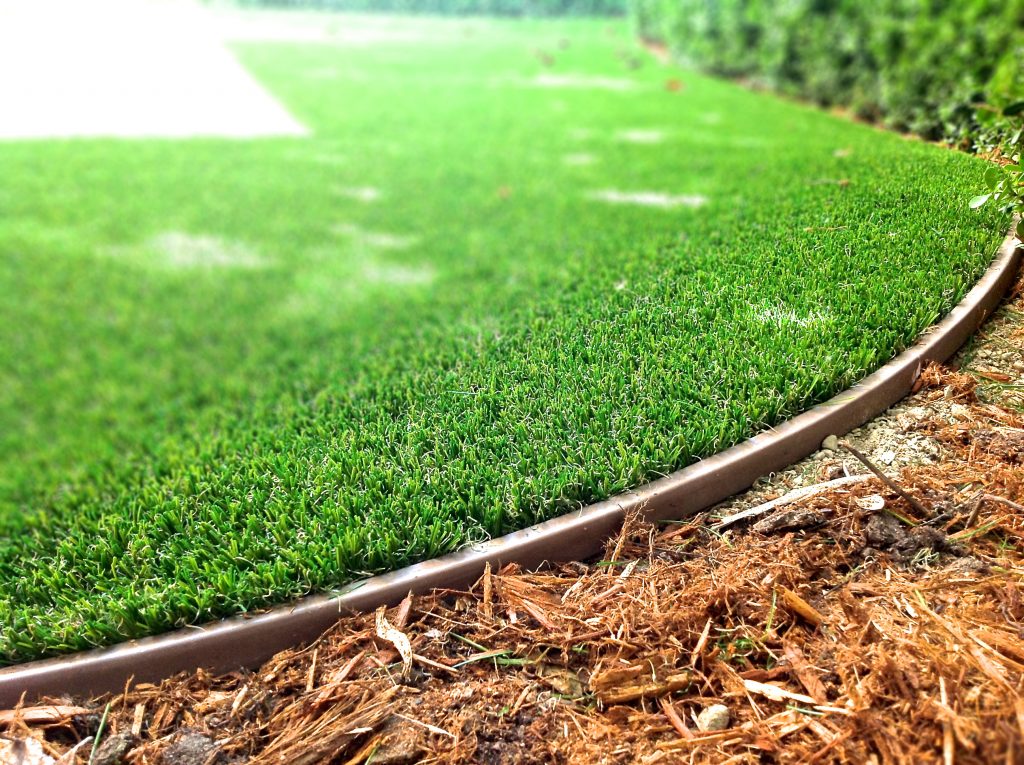Explore the Environmental Advantages of Opting for Synthetic Grass Solutions
The fostering of fabricated turf services offers a compelling chance to address pressing environmental obstacles. By significantly minimizing water use and lessening the application of damaging chemicals, these choices not only promote lasting landscape design yet additionally secure neighborhood ecosystems.
Water Conservation Advantages
One of the most substantial advantages of synthetic lawn is its capacity to preserve water. In contrast, artificial lawn does not require watering, dramatically lowering the total demand for water resources.
By getting rid of the need for routine watering, man-made turf adds to sustainable landscape methods and aids mitigate the ecological influence of extreme water intake. Additionally, the conservation of water prolongs to the decrease of drainage, which can bring about soil disintegration and waterway air pollution.
In addition, the setup of synthetic grass allows homeowners and municipalities to allot water sources much more successfully, concentrating on essential usages such as drinking water and farming. The shift towards fabricated grass not only promotes accountable water use however likewise lines up with wider ecological objectives targeted at protecting natural sources.
As communities progressively prioritize sustainability, the water conservation advantages of synthetic grass offer an engaging instance for its fostering in business and residential landscaping projects.
Reduced Chemical Usage
The change to man-made turf substantially decreases the reliance on chemical therapies generally made use of in all-natural lawn maintenance. Standard grass administration normally entails the application of pesticides, herbicides, and fertilizers to promote development and control insects. These chemicals can posture dangers to human wellness, regional wild animals, and the setting, adding to dirt and water contamination.
In contrast, man-made turf removes the demand for these hazardous materials. By reducing the launch of artificial compounds into the environment, synthetic turf promotes much healthier soil and water systems.
Furthermore, the absence of chemical drainage related to synthetic grass installments aids shield local waterways from air pollution, sustaining water life and preserving biodiversity. Phoenix turf companies. As communities progressively prioritize lasting techniques, selecting synthetic grass presents a practical remedy that straightens with ecological conservation objectives. With this change, homeowner can take pleasure in lush environment-friendly spaces without endangering ecological health and wellness, leading the way for a much more sustainable future
Lower Carbon Impact

In addition, the installation of artificial grass can cause substantial water conservation. All-natural yards require significant quantities of water for irrigation, which not only adds to the carbon footprint related to water removal and therapy but additionally strains neighborhood water resources. On the other hand, fabricated grass needs minimal upkeep, requiring no watering, consequently significantly minimizing water usage and its linked power costs.
Additionally, the durability of synthetic grass adds to its reduced carbon impact. With a lifespan of approximately 15 years or more, the need for constant replacements is lessened, causing much less waste and lower energy intake in manufacturing and disposing of typical lawn alternatives. On the whole, synthetic grass presents a lasting alternative for ecologically mindful landscaping.
Environment Conservation
Environment preservation is a vital consideration in the argument over landscape design options, specifically when contrasting synthetic grass to natural turf. All-natural turf lawns usually require considerable upkeep, including making use of fertilizers, chemicals, and herbicides, which can detrimentally influence regional ecosystems. These chemicals can leach into the soil and rivers, damaging native flora and animals her latest blog and interrupting regional environments.
On the other hand, synthetic grass presents a possibility to reduce the environmental impact of landscaping. By deciding for synthetic lawn, property owners can reduce the disruption of all-natural habitats linked with traditional yard treatment practices. Artificial turf eliminates the need for unsafe chemicals, therefore shielding nearby wild animals and maintaining the honesty of surrounding ecosystems. In addition, the installation of synthetic grass can lead to the conversion of previous lawn locations into even more biodiverse landscapes, such as pollinator yards or indigenous plant locations, which can support regional wild animals.
Eventually, the change to synthetic grass not just saves water and reduces upkeep initiatives however also cultivates a more harmonious connection between human activities and the all-natural environment, promoting environment conservation at the same time.
Long-Term Sustainability
Long-term sustainability is a vital variable in examining the benefits of synthetic lawn over traditional grass yards. One of one of the most substantial benefits of synthetic grass is its resilience; it can last approximately 15-20 years with marginal upkeep, whereas all-natural lawn needs frequent reseeding and substitute. This longevity reduces the demand for continuous resources, such as water, fertilizers, and chemicals, which are necessary for preserving a healthy yard yard.
Furthermore, artificial lawn adds to a decrease in carbon emissions related to yard care devices. Traditional grass commonly call for gas-powered lawn mowers, leaners, and blowers, every one of which add to air pollution. Arizona turf. On the other hand, synthetic grass gets rid of the need for such tools, promoting a cleaner environment
Furthermore, the manufacturing of artificial grass significantly utilizes recycled products, boosting its sustainability account. As producers embrace environmentally friendly more information practices, the environmental footprint of man-made turf remains to decrease.

Conclusion
The adoption of man-made grass options offers considerable ecological advantages, including substantial water conservation, read here lowered dependence on harmful chemicals, and a lower carbon footprint. In addition, synthetic grass aids in maintaining natural habitats by lessening land disruption and advertising long-lasting sustainability through the usage of durable products. Collectively, these aspects highlight the potential of synthetic grass to contribute favorably to ecological health and use a viable alternative to conventional landscape design practices in a progressively resource-conscious world.
In contrast, fabricated lawn does not require watering, substantially minimizing the overall need for water resources. By decreasing the launch of synthetic compounds into the ecosystem, man-made turf advertises healthier dirt and water systems.
Furthermore, the installation of artificial lawn can result in considerable water preservation. In contrast, fabricated lawn needs minimal maintenance, requiring no watering, thus substantially minimizing water usage and its associated power costs.
